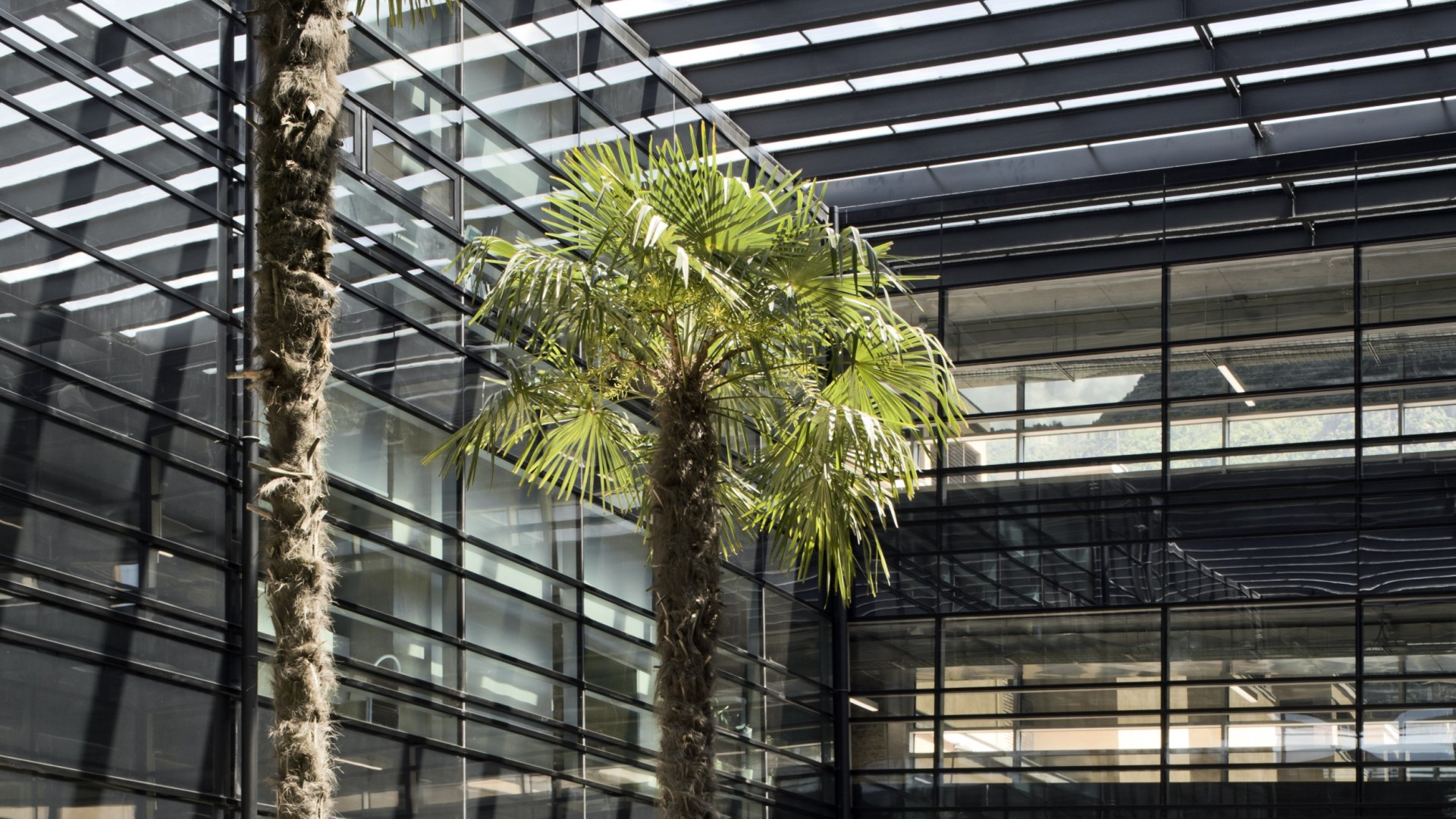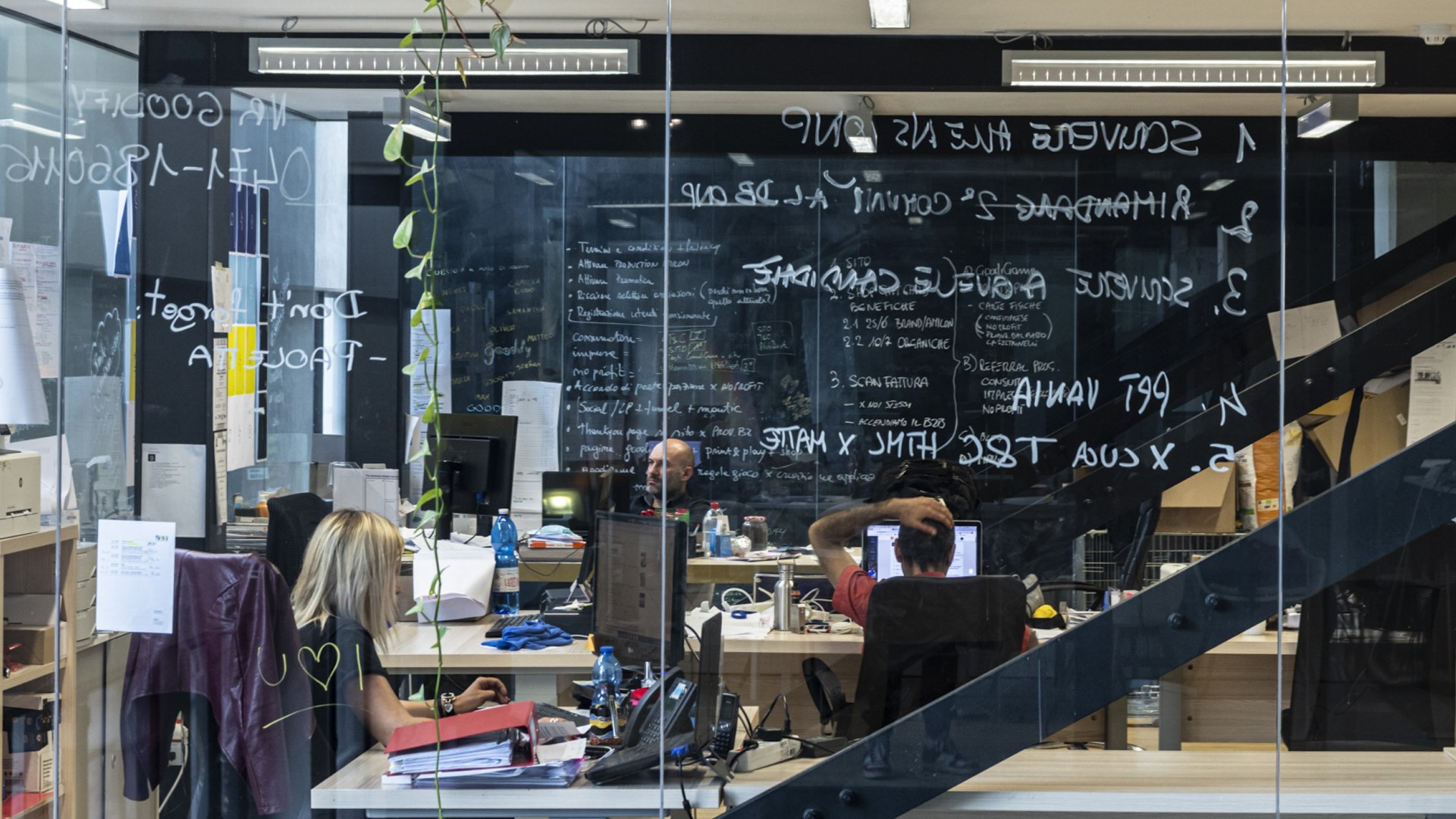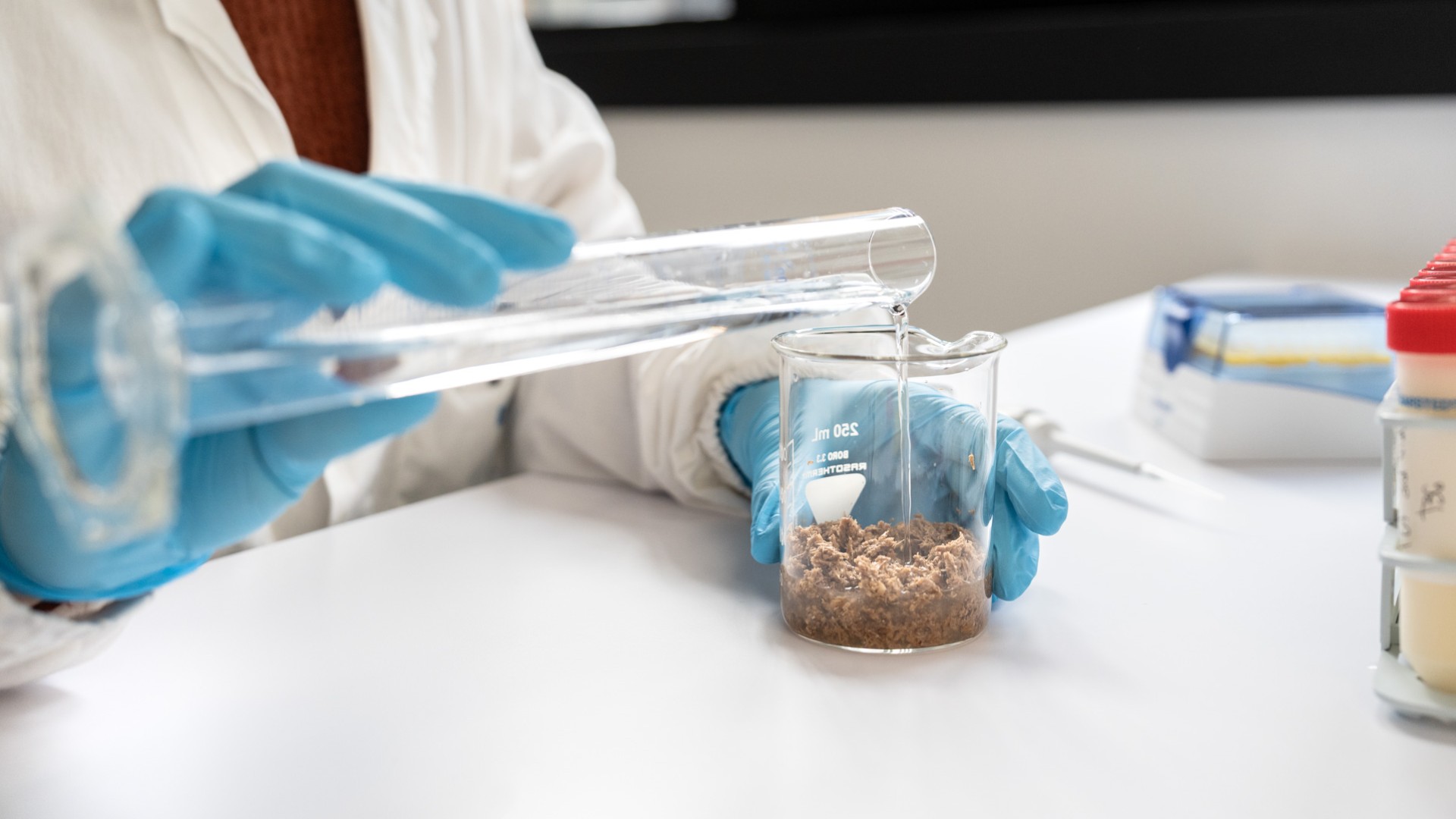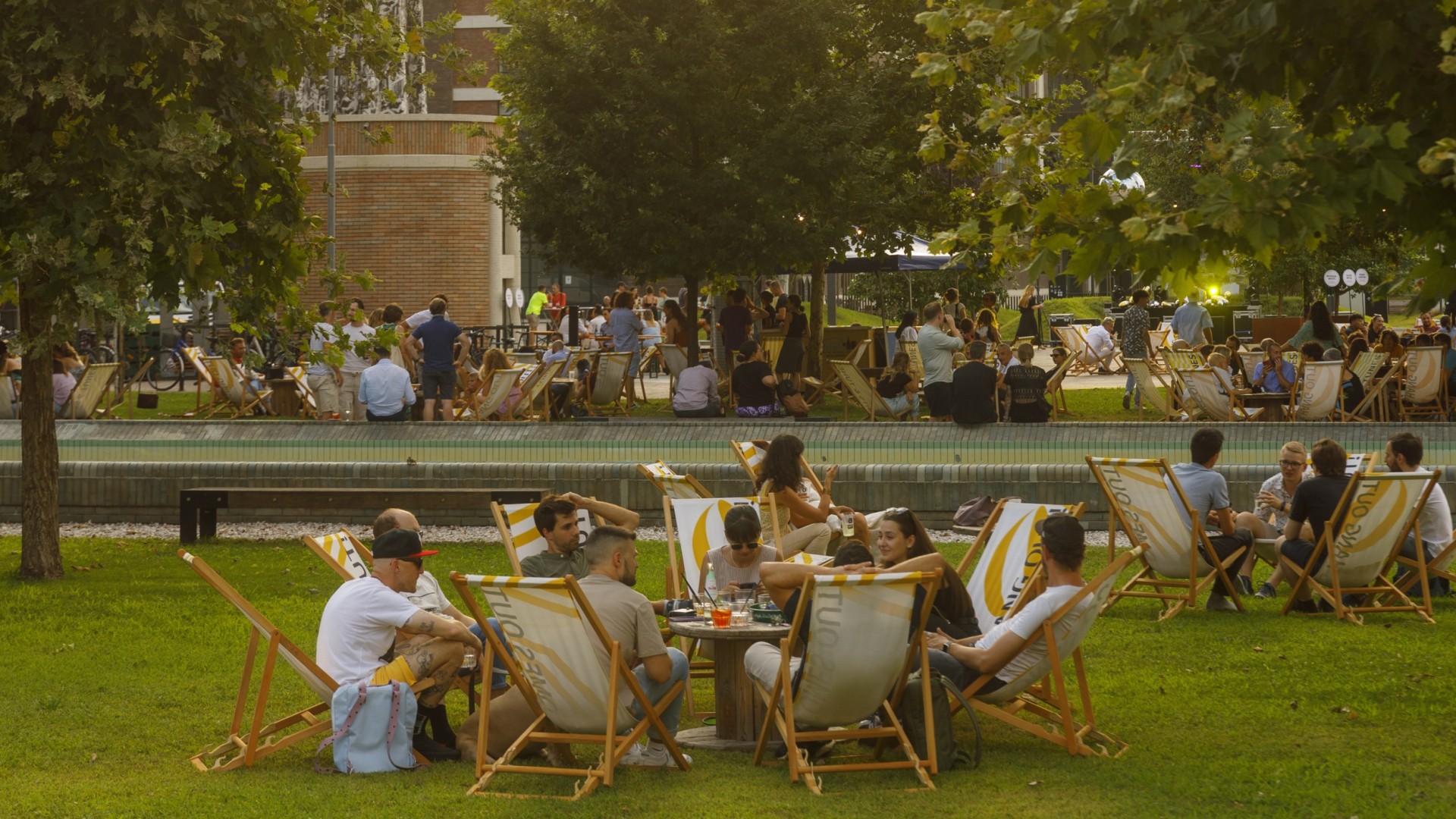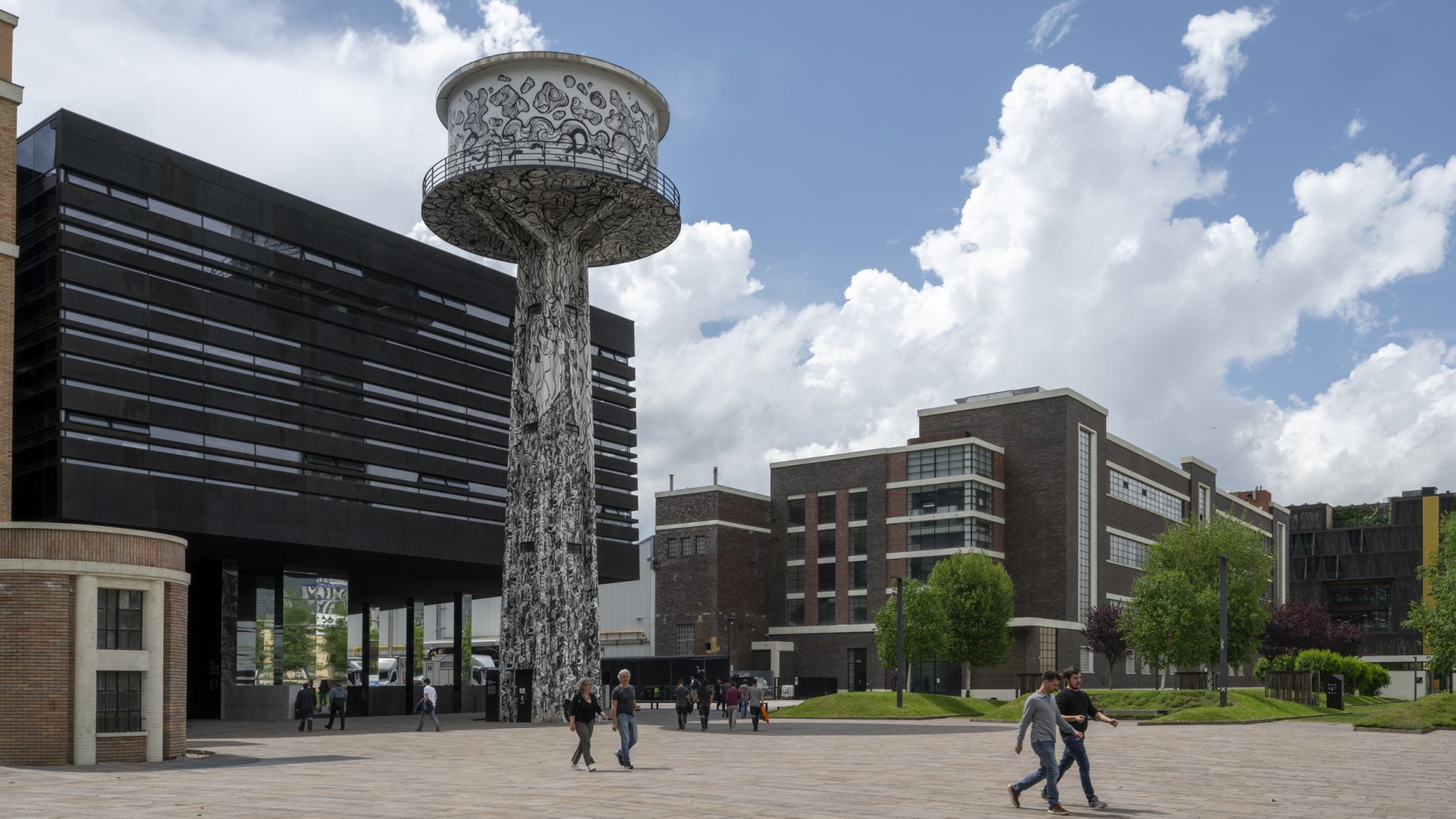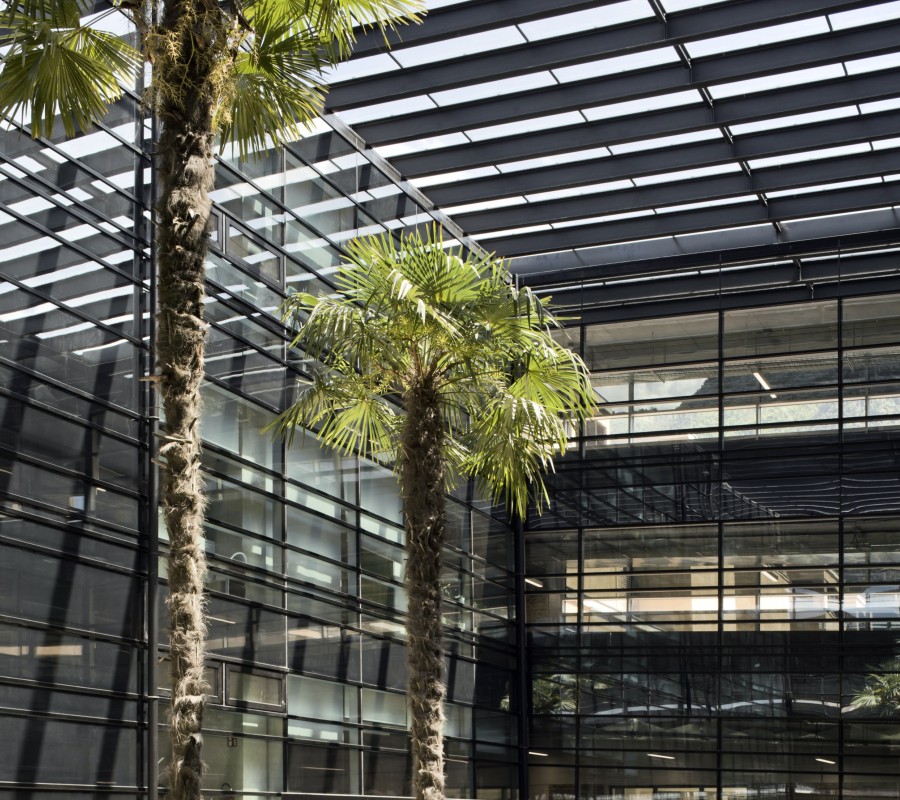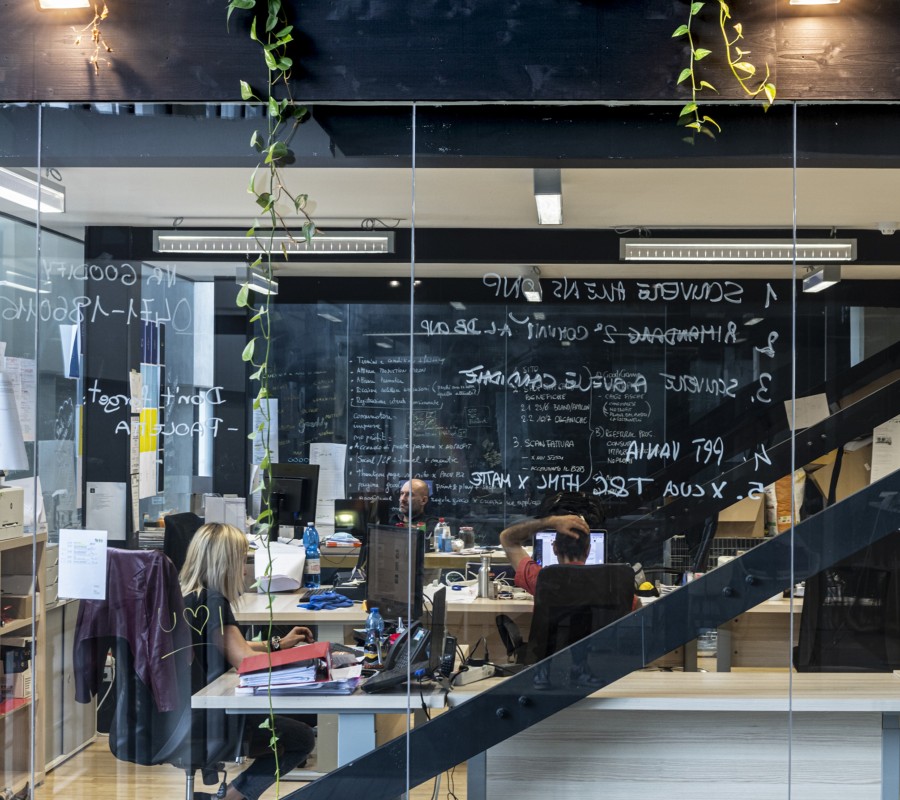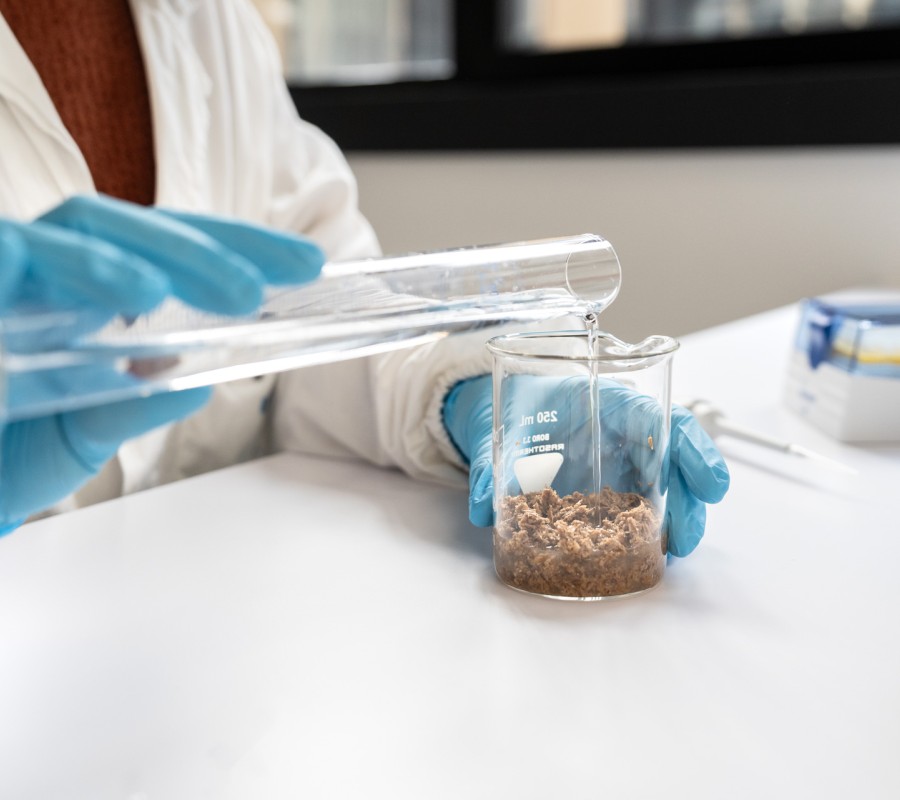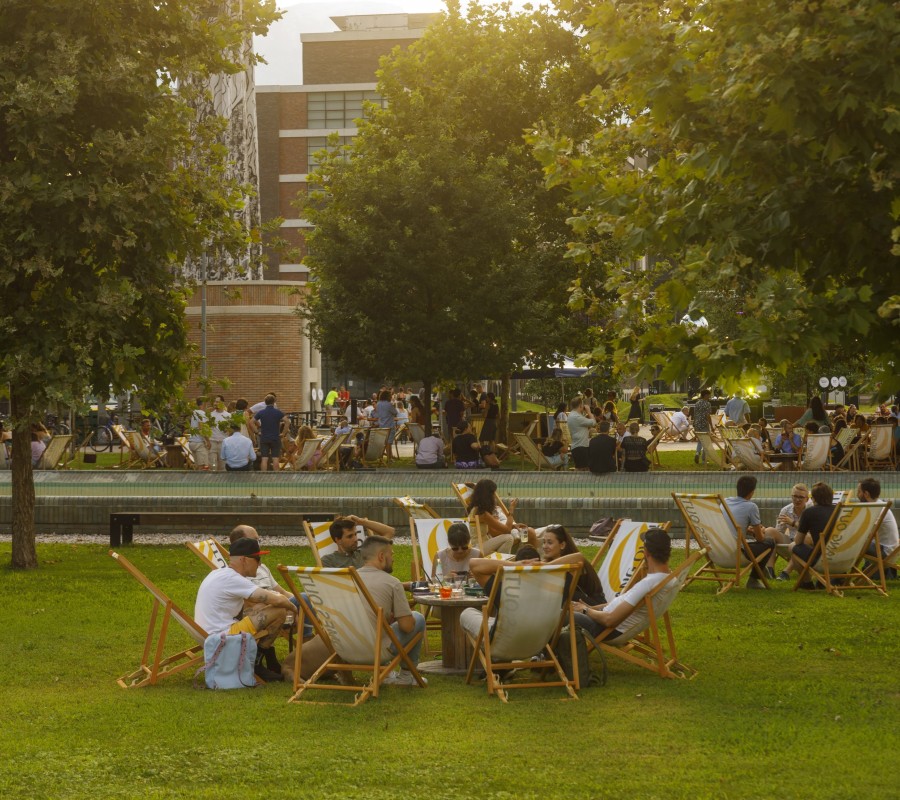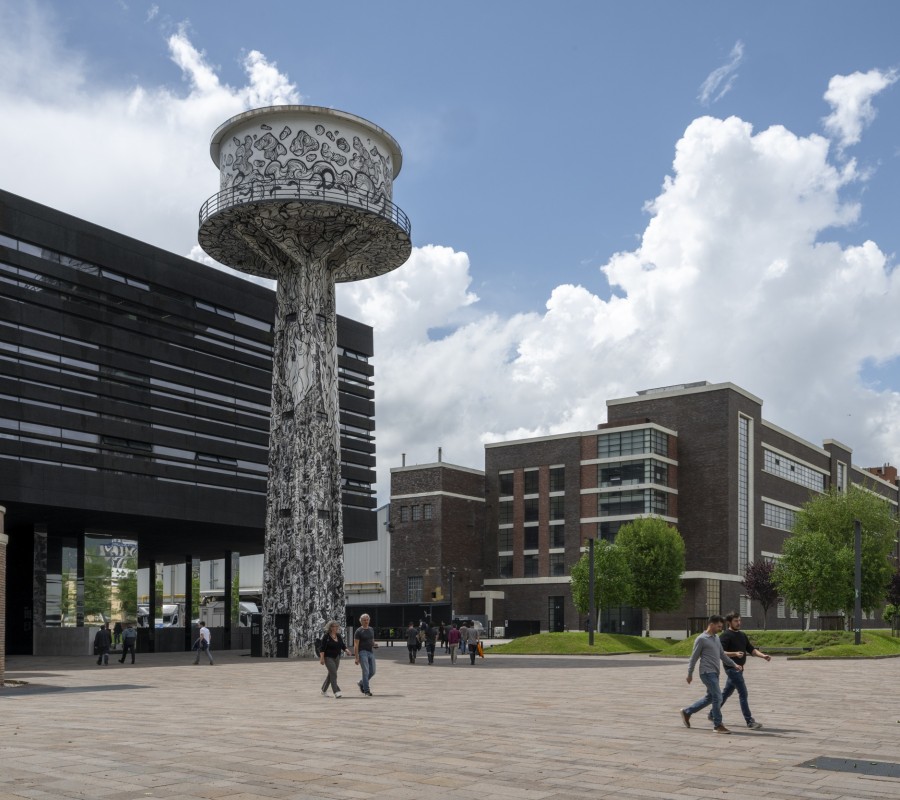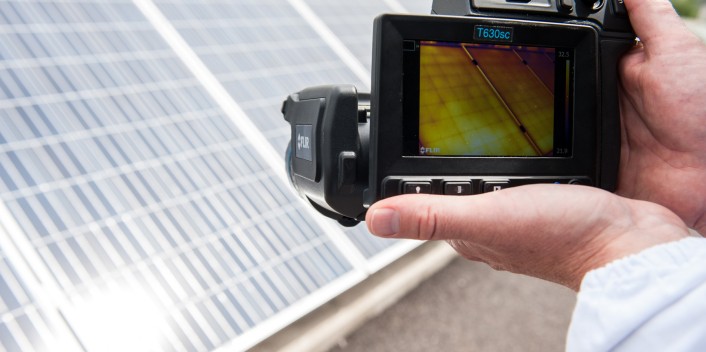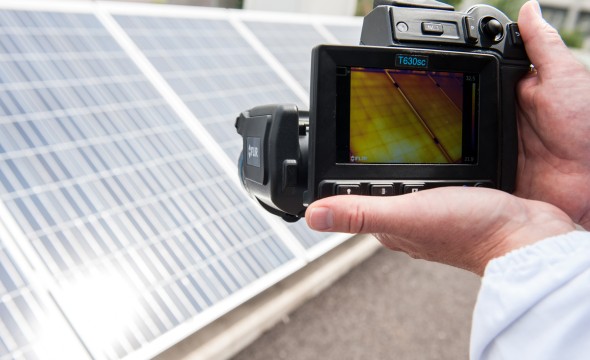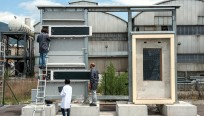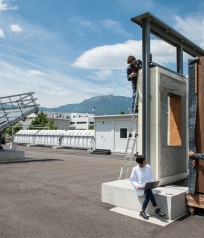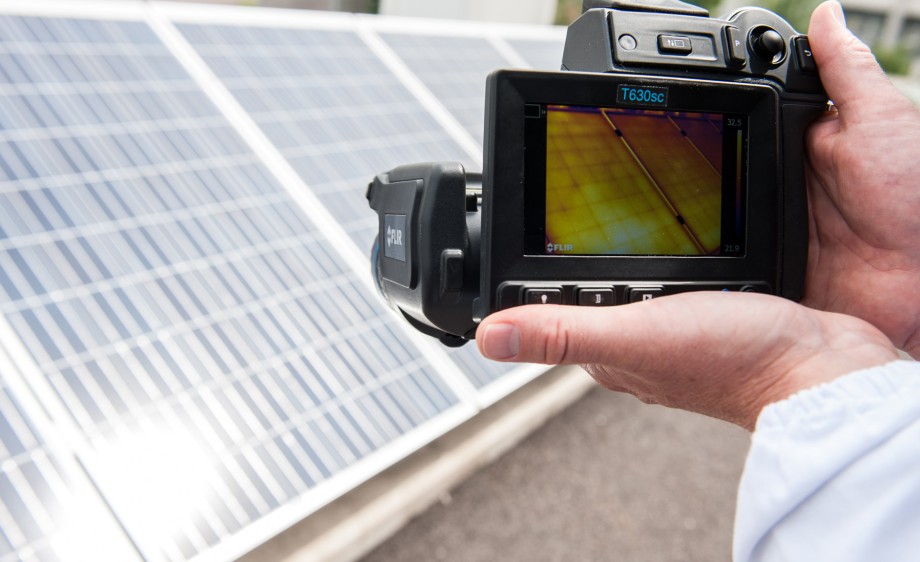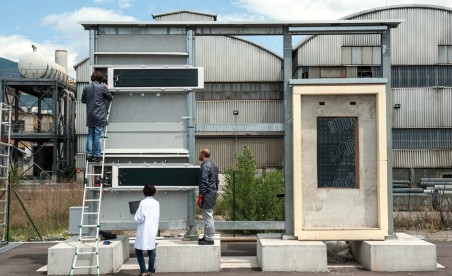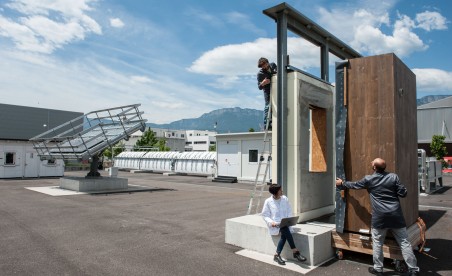Everything you need to know as a company
The open-air lab that approaches photovoltaics as a system.
Integrating photovoltaics in buildings? Only one way to find out: experimentation.
What would the output be of a photovoltaic module mounted on a south-facing roof at a 30-degree angle? What temperatures would a module mounted on a flat roof or façade reach? How much energy would a transparent or opaque prefabricated façade component with an integrated photovoltaic module produce? What would be the added value of combining a storage system and a photovoltaic system? Which inverter would be best? What are a photovoltaic system’s effects on the electricity grid? The PV Integration Lab is an open-air laboratory that answers precisely these questions – for those involved in manufacturing, planning, installation and sales.
Test and combine: how do photovoltaic storage systems affect the power grid?
In the laboratory, the electrical performance of both free-standing photovoltaic modules and systems and those integrated into architectural structures can be tested under real-life conditions. In addition, photovoltaic systems can be combined with storage systems and tested to observe the impact on the power grid.
This roof model realistically reproduces the pitch and other parts of the façade.
The research teams work with a mock-up of a 20-square-metre roof structure (5x4m) that can be tilted up to 60 degrees and oriented in any direction. This realistically replicates roof pitches and other components of the building envelope. A monitoring system is connected to the structure to measure parameters such as electrical power, temperature and radiation effects – and thus the efficiency of the installed modules – in real time. A model façade (4x6m) allows the performance of photovoltaic modules integrated into solar-active façades to be tested in the laboratory under realistic conditions. To maximise the reality of these conditions, care was taken in the construction of the test façade to ensure that it can effortlessly support heavy façade components in all weather conditions. The structure is divided into six 2x2m modules and can thus support several components simultaneously. The test façade’s measuring system can also assess complex systems in which, for example, photovoltaic systems, electrical storage modules and control systems are combined.
Advantages of a climate box and testing innovative energy storage systems.
The facility additionally has a climate box, which allows the temperature of the interior area of the respective façade component to adapt to conventional indoor temperatures. A standard photovoltaic system connected to a storage and charging device additionally allows us to test innovative energy storage systems. Storage systems are the key to optimising the relationship between locally produced energy and a building’s energy consumption.
